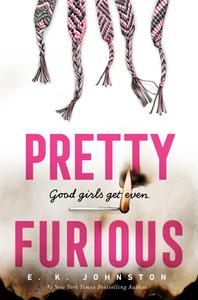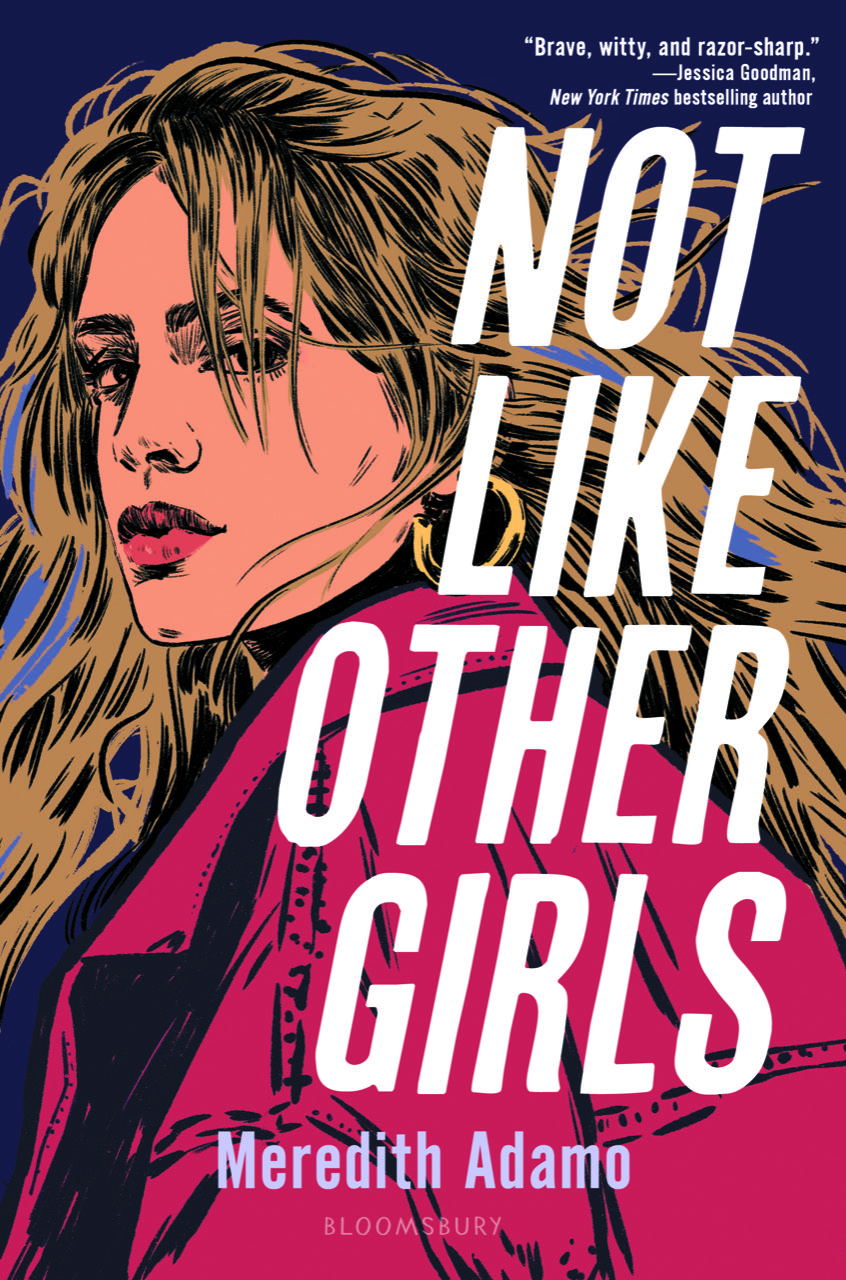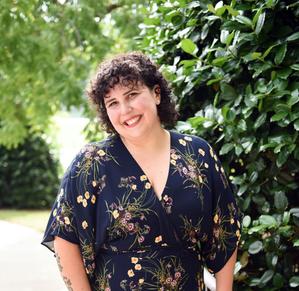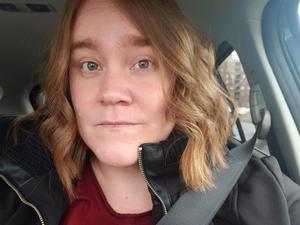
|

|
E.K. Johnston is the bestselling author of several YA novels including A Thousand Nights, which was shortlisted for the Governor General's Award. Pretty Furious (Dutton Books for Young Readers) is a "spiritual sequel" to her YA feminist title Exit, Pursued by a Bear.
Meredith Adamo is a YA author based in hot, humid North Carolina, but she's originally from Rochester, N.Y., which is her favorite place on the planet. Not Like Other Girls (Bloomsbury YA) is her debut novel and an Indie Next List pick.
Here, Johnston and Adamo discuss the "not like other girls" and "good girl" tropes, writing feminist novels for teens, and the fun coincidence that both their books feature prominent characters named Maddie.
E.K. Johnston: Okay, so first things first! What drew you to write "girl culture" as a thriller?
Meredith Adamo: I don't know if I knew when I first started drafting how strong of a theme it would end up being. I've always loved the teen sleuth genre, so I wanted to write the kind of mysteries I'd grown up reading. I also thought it'd be fun to play with the "not like other girls" trope because it's so contentious. But the way the threads ended up coming together through the main character Jo's emotional arc only started to become clear to me during my (endless) revisions.
I love how you delve into the "good girl" trope. What led you there?
Johnston: I had the idea a while ago, and I honestly don't remember how. I think I had some leftover feelings, not just from writing Exit, Pursued by a Bear but from how people responded to Exit. It's kind of a piecemeal book: my friends from high school, my anger, the forest in summer, and the idea that it takes so little to wreck a reputation. I wanted to write about girls who know there's something else out there and want to be better at fighting for it. And then I was like, "White privilege, the ultimate weapon."
Adamo: I love how the girls are allowed to feel their anger; one of the refrains that stood out to me across the narrations is them saying, "Well, I'm a good girl." And it's such a meaningful way to flip that role on its head, especially as the girls realize that people in their community overlook them, but also try to protect them when they're not asking for it--especially at the expense of others.

|
|
| Meredith Adamo (photo: Amanda Padbury) |
|
Johnston: Exactly! I'm a crier, and so I have to be careful not to let "white woman tears" cause damage. I wanted to explore what happened when the girls weaponized themselves rather than being used as weapons. Is there a particular weapon Jo uses in your book that you were surprised by?
Adamo: Often when I talk about the "not like other girls" trope, I refer to it as a weapon that Jo used in the events before the novel. So, Jo starts the book as an outcast, but in her former life, she was that cool girl who only hangs out with guys. I viewed her "not like other girls" mindset as one that she used to protect herself from engaging with the misogyny and the pain she endured. To Jo, if she can wield this thing to protect herself, then it's proof she doesn't need to be friends with other girls, and that it's okay that she's being mistreated by guys because they see her as an equal. She ends up realizing early on this is not true.
Johnston: I feel that whole premise in my chest. And I was not only friends with guys in high school, but I was a people pleaser, and took a lot of crap I should not have. Teens these days have giant problems to worry about (politics, climate change, etc.), and the more personal problems get swept away for being less important. But they still exist, and it hasn't got any easier to deal with them.
Adamo: It's funny, because there were various points when I was reading Pretty Furious that I was thinking, "Wow, Jo could've used Maddie, Mags, Louise, Jen, and Jenny in her corner." So much of Not Like Other Girls is about Jo learning to recognize her experiences, and I think that your "good girls" go through something similar. It was moving to watch the girls struggle with how they've been perceived and how that differs from their actions and their desire to do the right thing. (And as a former "good girl" teenager who grew up Catholic and often bristled at the way others perceived me, I felt so seen by these characters.) I think it'll be so important for teens to see how these characters are allowed to grow and change their minds about how they exist in the world.
 |
|
| E.K. Johnston | |
Johnston: And I think that's one of the things that differentiates our books from each other (in the good way!): yours is plot first and mine is character first. I like how different our books are even though they are theoretically about the same thing. It's almost like teen girls aren't a monolith.
Adamo: I love that they're in conversation with each other and looking at some of these similar themes from totally different angles.
Johnston: A Tale of Two Maddies. They should use that for the article title.
Tell me about writing your Maddie, and how writing the Main Character is different from writing the Plot Driver.
Adamo: Maddie in Not Like Other Girls is also this "good girl" character--and Jo isn't exactly nice when she tells her as much. But where the girls in Pretty Furious look at their role as good girls and find a way to push back, Maddie wants to shed her good girl status completely. And I really wanted Maddie to feel like a real person, and not just another missing girl.
Johnston: I was going to say: two tropes for the price of one! What has been the hallmark of your debut experience so far?
Adamo: I think this is a little corny, but once I started realizing it was getting into the hands of actual teenagers, it just made every doubt and anxiety worth it. How do you feel Pretty Furious fits into your list of novels now? I can definitely see how it's a companion (of sorts) to Exit.
Johnston: I have this insistence on setting books in my town and high school whenever possible. Pretty Furious will be the fifth installment of what my editor calls "The E.K. Johnston Multiverse." I think it makes the setting feel more real, since I can tie it to real places. I think Pretty Furious is a bit less rose-colored glasses than my usual. Do you mine your history for inspiration, too?
Adamo: Oh, absolutely, I set Not Like Other Girls in my hometown of Rochester, N.Y., partly because it's the place I know best, but I think so many of my own complicated feelings at 17 feel really tied to it. I'm not sure if I'd say my book is necessarily a love letter to Rochester--that feels a little more earnest than my actual feelings--but grounding it in a real place with real locations brought it to life in a way I didn't expect.
Johnston: I think of Pretty Furious as kind of an instruction guide, though hopefully not too pedantic. I think teens have a better idea of the world, these days, but there's no easy instruction, and I wanted to provide something without requiring real people to get hurt.
Adamo: I think it's such a good point! I often talk about how I feel a sort of responsibility as a young adult author because I want readers to feel seen and respected and understood, while also showing that there's space for us to change and grow.

